59 Rivoli was born as a squat collective and currently turns upside down the stereotypes that take over the crowded center of Paris.
We all like to travel, but not all of us like tourists . Cross half the world to listen to your own language or buy the same food can produce a cognitive distortion in our brain or, at least, a unpleasant feeling , of restlessness.
The resources invested in the displacement must be rewarded with that uniqueness that discovery offers , or so we hope every time we get off a train in a remote place.
However, we are not so naive as to believe that this will happen. in a big capital european , in large cities that would even seem incomplete without the meek herds of disoriented humans following a colorful umbrella.
Tails, souvenirs or open top buses are a necessary part of the landscape urban, sometimes annoying, but also comforting after have seen these same empty cities for the pandemic.
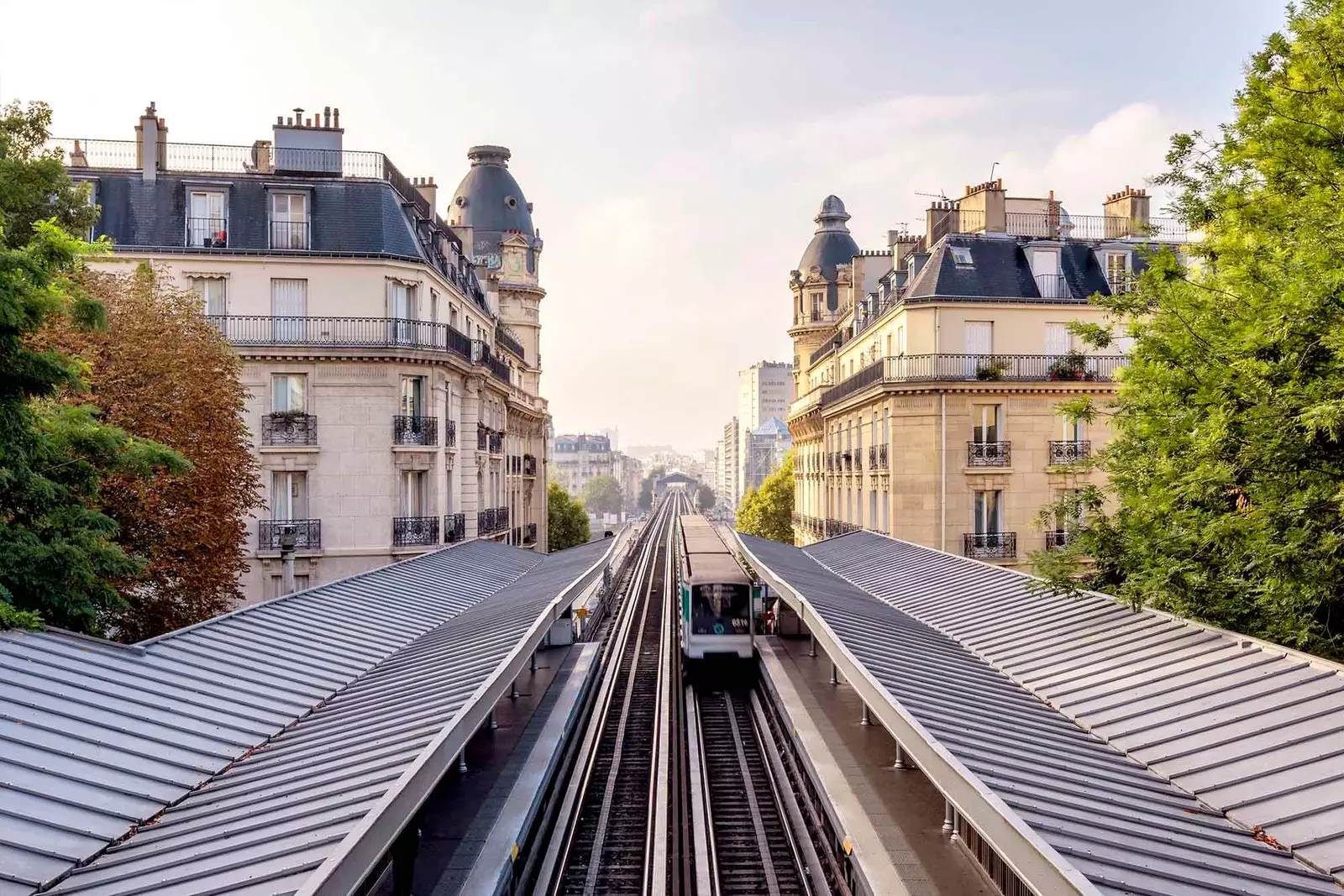
In Paris.
In some cases, such as the center of Paris, this overcrowding is cartoonish . In the three kilometers of the rivoli street, that connect the Vosges and Concorde squares using icons like the louvre, the Tuileries or department stores Samaritan , Haussmann's nineteenth-century splendor parodied himself to the point of bordering on the demeaning.
It is not that the city should be reserved for the elites who built it, but the tourist circus that this street shows destroys so much romance What is the visitor waiting for? like habitability that the place requires.
It is this abused environment that makes the number 59 Rivoli street something so contradictory, so surprising. This is how we perceive it from its messy, colorful and demanding facade , as a large installation of contemporary art, which is a visual relief from the most mainstream circuit in the center of Paris.
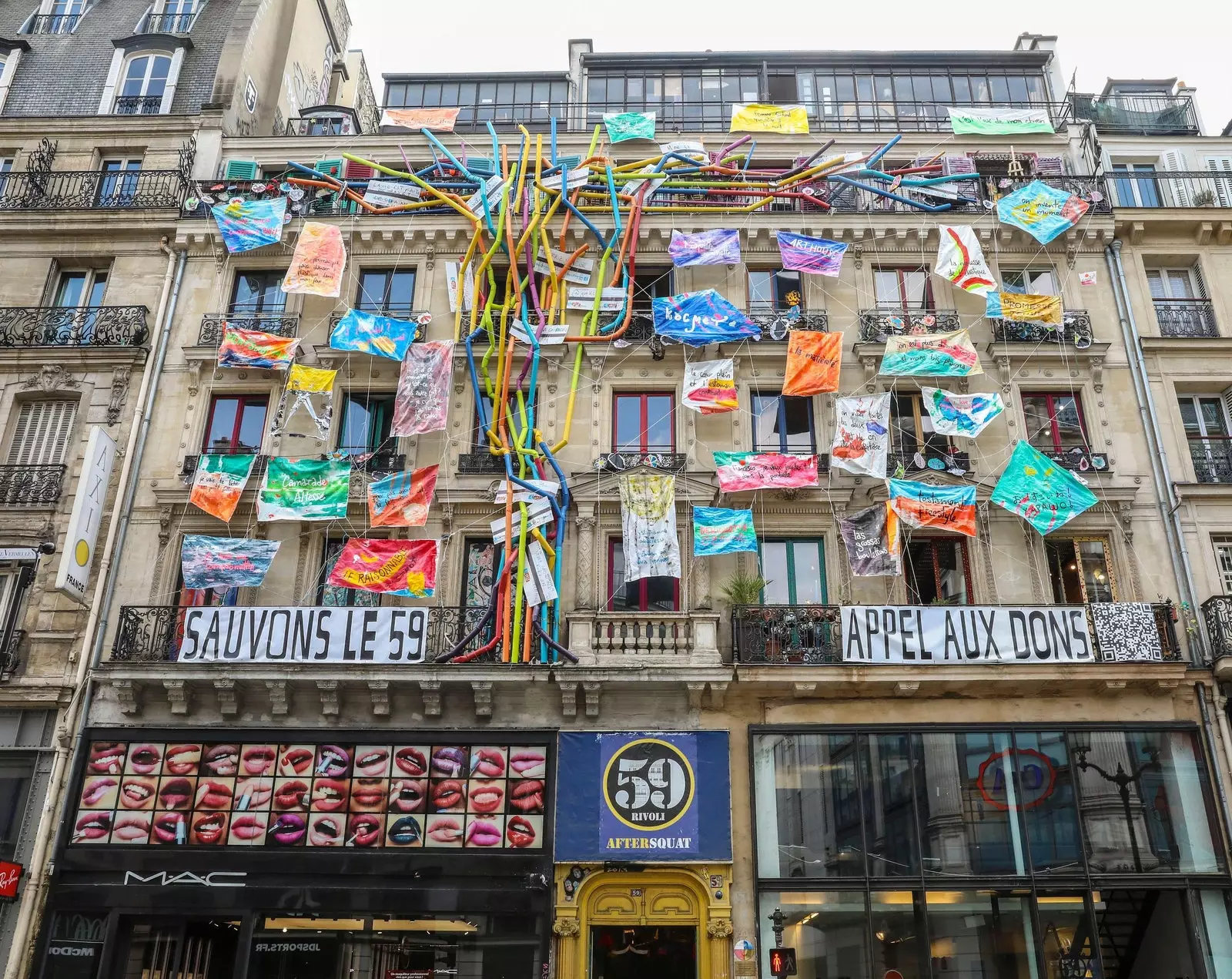
The facade of 59 Rivoli.
UKRAINE PROTAGONIST
With their flags of Ukraine and protest murals, almost violent, this wall is responsible for putting in their place the clueless who believe that the world returns to pre-pandemic happiness. We can fantasize about it century of lights s or the bohemians who drink whiskey with Hemingway, but this visual scandal reminds us that something tragic is happening not many kilometers from us, in Eastern Europe.
This facade is likewise a good cover letter , because at 59 Rivoli creativity expresses itself in a different way than it usually does in this city awash in art. On the ground floor and mezzanine, the Ukrainian creator Nikita Kravtsov commissions the building's only temporary exhibition , which collects works by about thirty artists with the conflict in Ukraine as the central axis.
“The most important thing is to show people that Ukraine it is a country like any other; that they don't have to take pity on us, but integrate us,” says Kravtsov, who moved to France almost a decade ago.
“We have articulated the exhibition in such a way that it is provocative , somewhat innocent at the beginning and much harsher at the end", explains this young man, who considers that "the French public is somewhat conservative, but there are many people who are interested in the subject ”, He points out pointing to some murals and comics displayed at the entrance.
In addition, half of the proceeds will be destinated to Ukraine Amitie , so "buying a work is good for two reasons: you contribute to this cause and you can get works by very famous artists at a lower price than normal."
He himself explains that this exhibition is one of many that take place each year . They rotate every two weeks and are the gateway to a much larger artistic concept. “For that, it is better to talk to Gaspard Delanoe , which is on the third floor”, he indicates, “you will see it between a labyrinth of paintings and posters”.
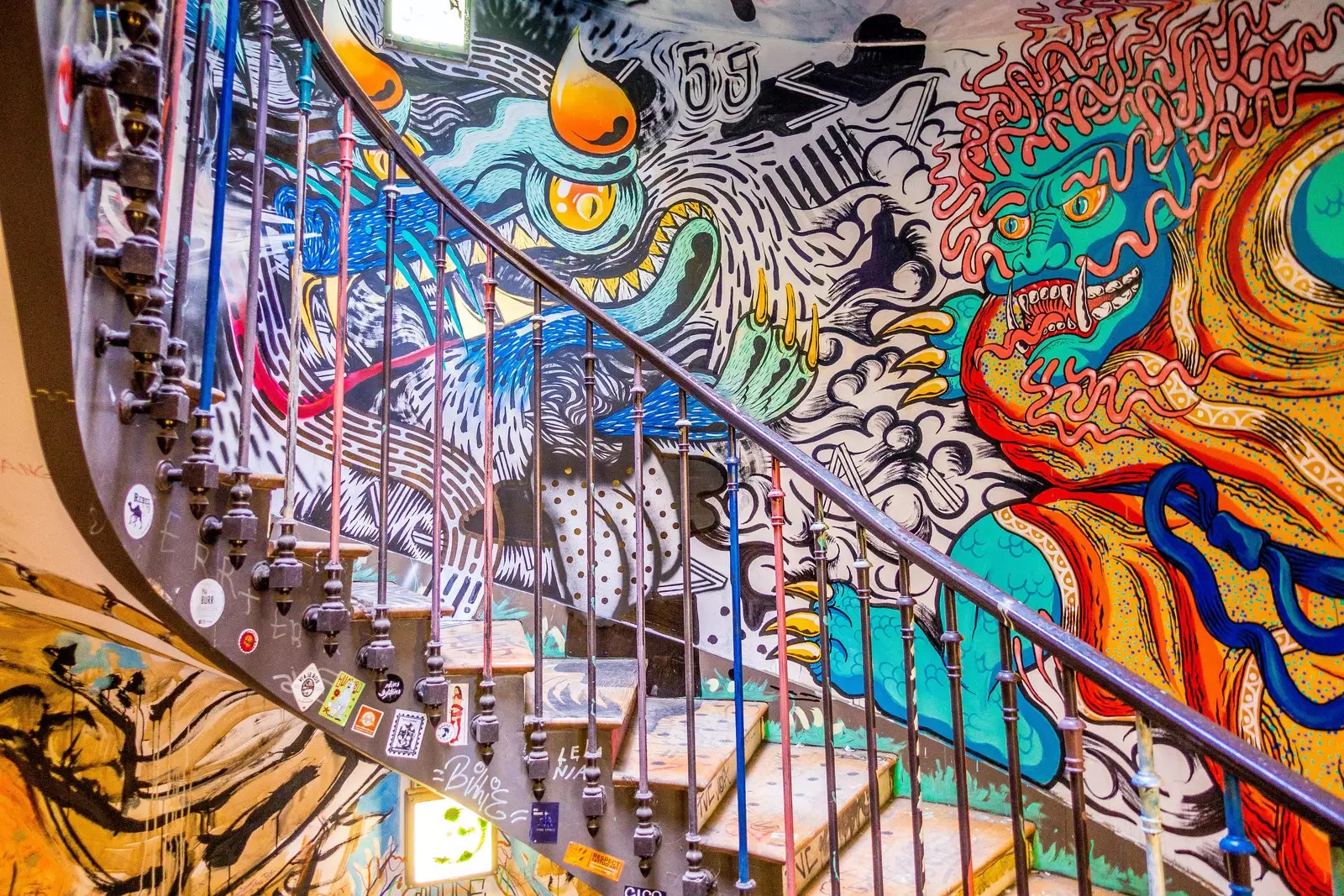
One of the colorful plants of 59 Rivoli.
A UNIQUE INITIATIVE IN EUROPE
Effectively, in the middle of a tangle of junk , Delanoë entertains some tourists and arranges some stools to explain the history of this place: “it is a unique initiative in all of Europe. It started in 1999, when we squatted this building that was abandoned. We wanted to use a wasted place to develop ourselves as artists ”, he tells.
Some of them lived in the building and others just they had here their workshops . “After three years, the city hall of paris he offered us to legalize the situation; acquired the property, remodeled it and since then gives us the space to work and exhibit our works, on the condition that no one lives here”, explains Delanoë, whose job is to write irreverent messages on old paintings.
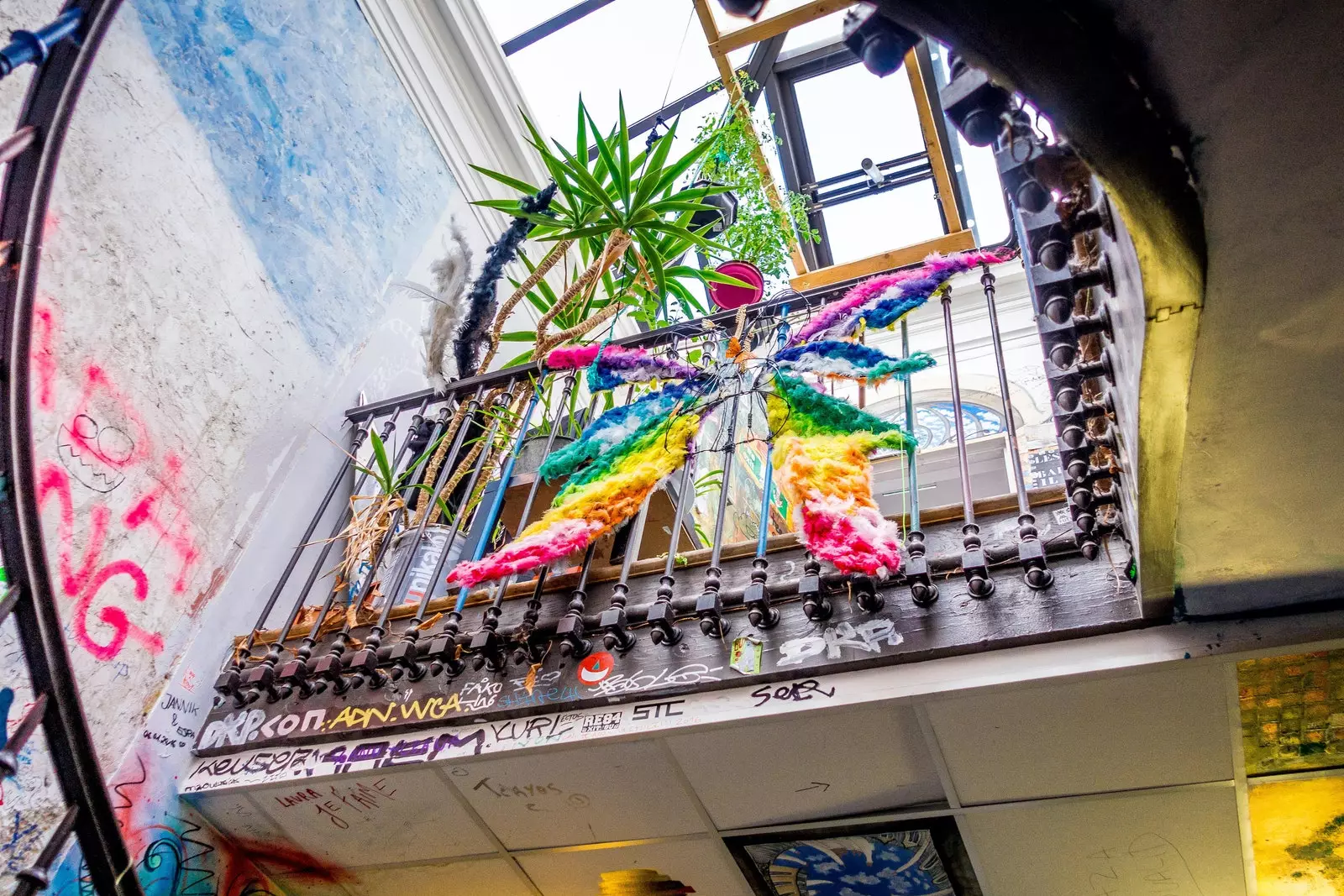
You never know what you will find in its five floors.
Currently, 14 of the artists who occupied the building in 1999 continue to work in these facilities. The other 15 studies are temporary residences They rotate every six months.
“It is an amazing opportunity for artists who are exploiting, since they have a good place to work, they can interact and generate synergies with other creators and get a very high visibility , here in the center of Paris,” says Delanoë, whose pride in having founded this place is undeniable.
The system she tries to prioritize diversity : “The decision of who can occupy the space is barely made. We receive the applications and evaluate parameters such as age, gender parity, artistic disciplines and nationalities, which end up giving us the ideal candidate”, she explains while pointing out that artistic criteria are not valued, “that only time can validate”.
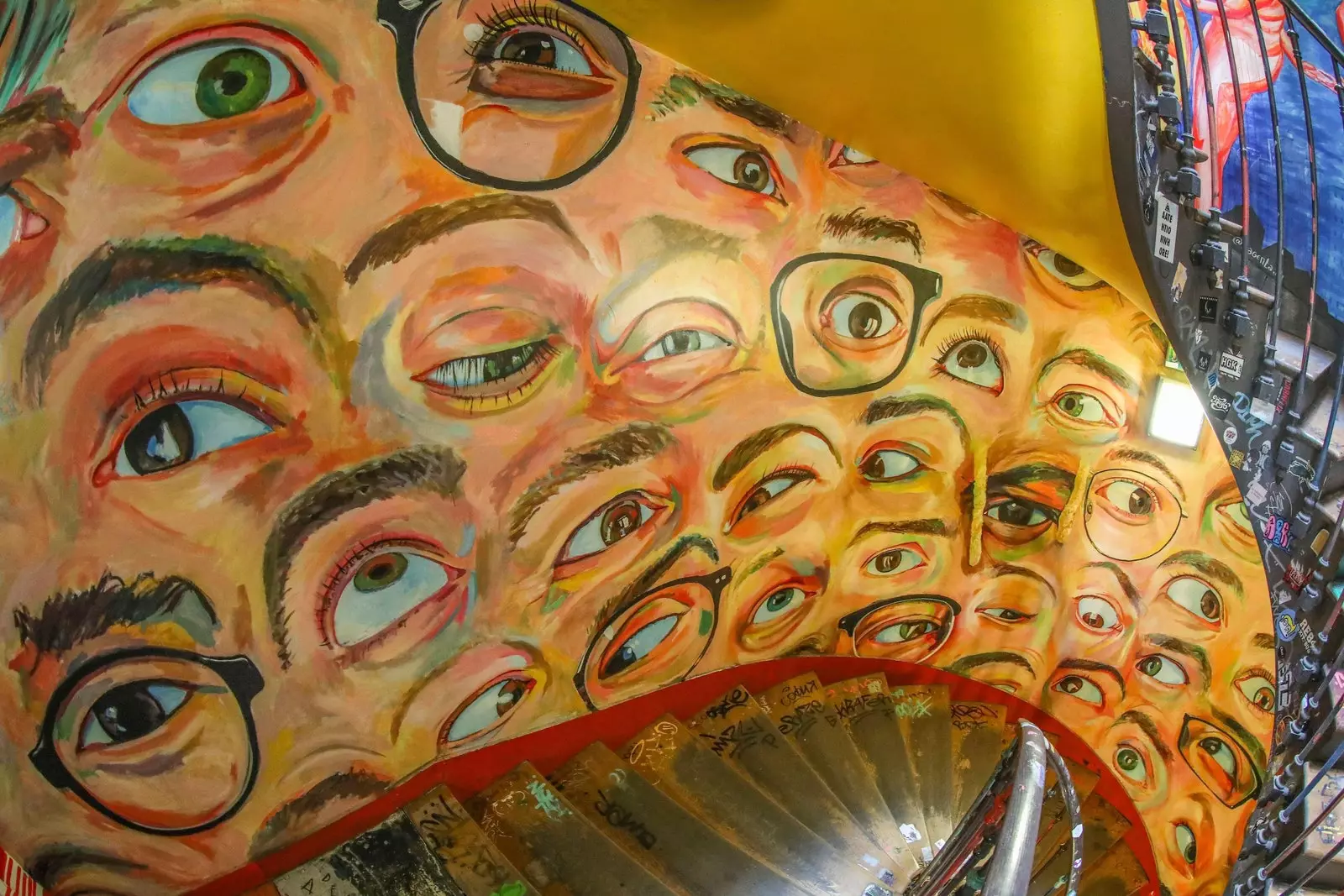
They watch you.
This cosmopolitanism is drawn through the almost 30 rooms and on top of these five floors. Artists of different races and ages work in disciplines such as sculpture, collages, painting… while listening to different types of music and speaking in different languages with the bewildered tourists who they don't know what to photograph, from so many different stimuli they receive.
Delanoë also emphasizes that the nature of this place is purely artistic: “In the street everything is for sale, everything has a price. Not here. Here We work outside of money” , because they do not pay for the land nor do they use it to sell.
"Only we want to work and be known ”, She vindicates her with a dreamy smile that at around 60 years of age is not usual.
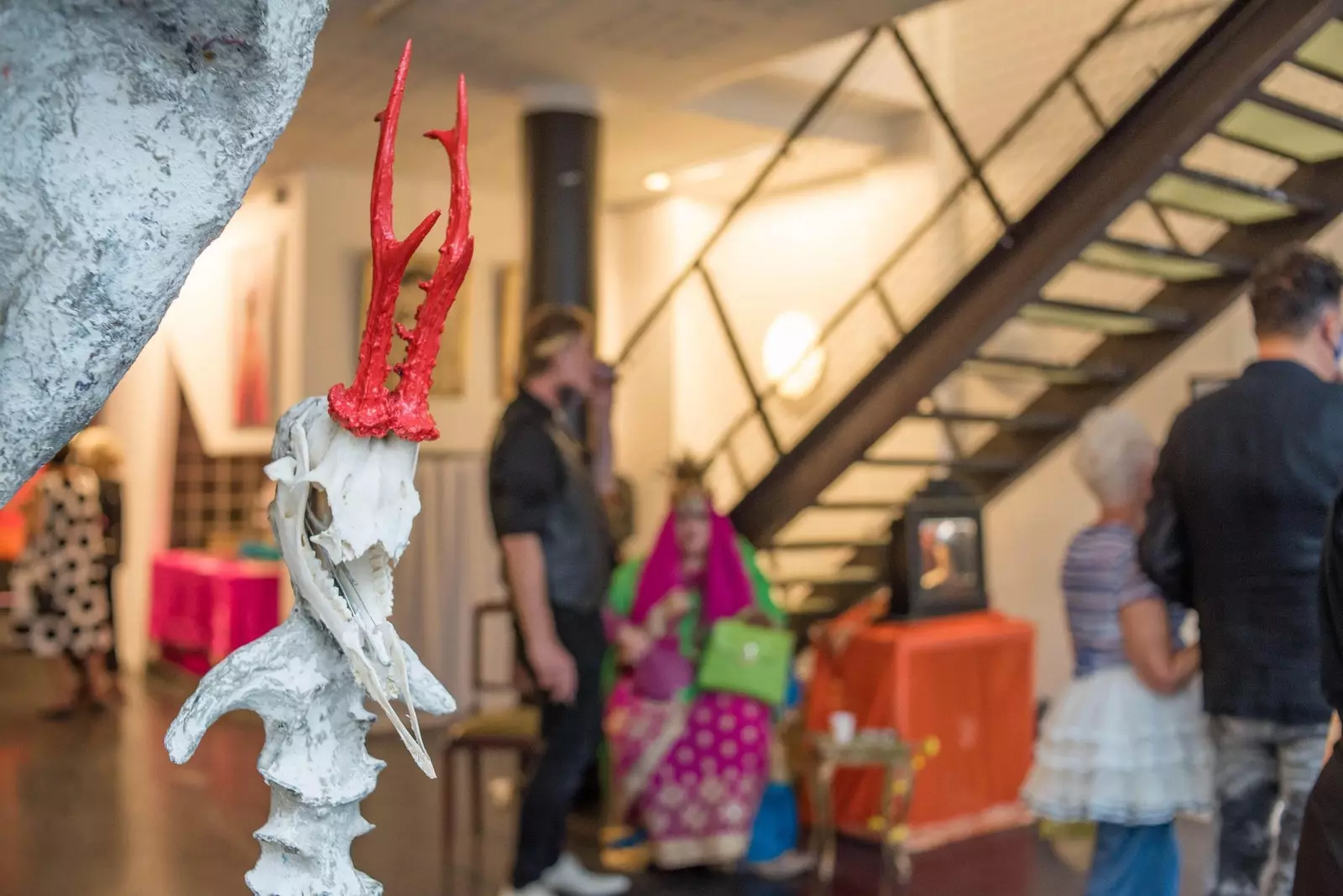
An exhibition at Galerie 59 Rivoli.
Back on bass, Nikita Kravtsov explains that he himself finished his residency last December. Due to his emotional involvement with the current geopolitical situation, he took command of the current exhibition and, as confirmed by Delanoë, "managed to gather one of the best shows since we started , for its strength and for the level of the participants”.
Both this sample of a political nature and the founding concept of Rivoli59 claim the role of the local and the alternative in an environment devastated by more commercial tourism.
But, paradoxically, it is inevitable to see how this proposal also drinks from this crowded location, which stimulates the career of artists and takes over a squat proposal that was revolutionary at the time, but that now is adulterated by its legal status.
Nice to see coexistence of these two universes and knowing that all kinds of ideas have a place in this place, but we also understand that even the most extravagant ideas must give way to a large influx of people who are only looking for what they already know.
